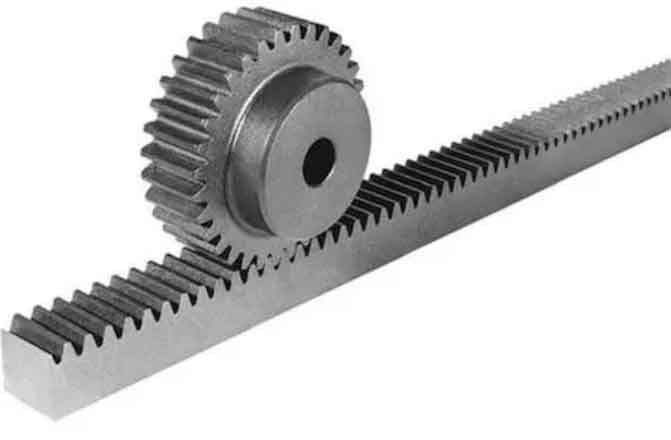
Advancements in rack and pinion gear manufacturing have led to significant improvements in precision, enabling the production of gears with exceptional accuracy and performance. These advancements have been driven by advancements in manufacturing technologies, materials, and design methodologies. Let’s explore some of the key advancements in rack and pinion gear manufacturing that have contributed to achieving precision at its best:
1. Manufacturing Technologies:
Modern manufacturing technologies, such as CNC machining, have revolutionized the production of rack and pinion gears. CNC machining allows for highly accurate and repeatable machining processes, ensuring precise tooth profiles, gear geometry, and dimensional tolerances. Computer-aided design (CAD) and computer-aided manufacturing (CAM) software further enhance the precision by enabling precise control over machining operations.
2. Gear Design and Simulation:
Advanced design and simulation tools have greatly improved the design process of rack and pinion gears. Computer simulations can predict gear performance, contact patterns, and load distribution, allowing for optimization of tooth profiles, gear geometry, and material selection. These tools enable engineers to design gears with the highest possible precision and efficiency before the manufacturing process begins.
3. High-Quality Materials:
The availability of high-quality materials has played a significant role in achieving precision in rack and pinion gear manufacturing. The selection of suitable materials, such as alloy steels or specialized gear steels, ensures high strength, wear resistance, and durability. Advanced heat treatment processes and surface treatments enhance the material properties, resulting in gears that can withstand high loads, provide excellent tooth contact, and maintain precise performance over their operational life.
4. Advanced Tooth Profile Grinding:
Tooth profile grinding is a critical process in rack and pinion gear manufacturing. Advancements in grinding technologies, such as CNC profile grinding machines and diamond grinding wheels, have improved the precision and surface finish of gear teeth. These advancements ensure accurate tooth geometry, precise tooth spacing, and minimal surface roughness, resulting in gears that offer smooth and efficient operation.
5. Quality Control and Inspection:
Modern quality control and inspection techniques have significantly contributed to precision in rack and pinion gear manufacturing. Coordinate measuring machines (CMMs), gear measuring machines, and optical inspection systems enable accurate measurement and verification of gear geometry, tooth profiles, and dimensional tolerances. These quality control measures ensure that manufactured gears meet the desired specifications and achieve the highest levels of precision.
6. Lubrication and Surface Coatings:
Advancements in lubrication and surface coatings have enhanced the performance and durability of rack and pinion gears. Lubricants with superior lubricating properties and enhanced film strength reduce friction, wear, and noise, contributing to smoother operation and extended gear life. Surface coatings, such as diamond-like carbon (DLC) coatings, improve surface hardness, reduce friction, and enhance resistance to wear, resulting in gears that maintain precision even under demanding operating conditions.
7. Continuous Process Improvement:
Manufacturers continually strive for process improvement and optimization to enhance precision in rack and pinion gear manufacturing. This includes implementing lean manufacturing principles, statistical process control (SPC), and Six Sigma methodologies to identify and eliminate variations, improve process stability, and achieve higher levels of precision and consistency.
These advancements in rack and pinion gear manufacturing have revolutionized the industry, enabling the production of gears with exceptional precision, accuracy, and performance. As a result, industries such as automotive, aerospace, robotics, and industrial automation can benefit from highly reliable and efficient gear systems that meet the most demanding requirements of precision motion control.
